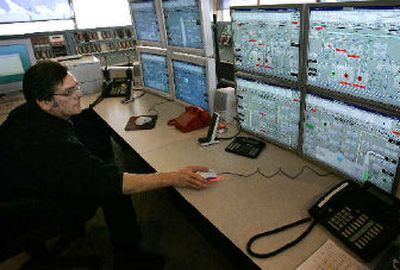Natural gas economy seen as ‘dysfunctional’

BOSTON — On the brink of the 21st century, a group of energy experts peered into the future of natural gas, and what they saw was quite rosy — and quite wrong.
To satisfy growing demand, producers could crank out a third more natural gas over the next decade at “competitive prices.” Or so said the National Petroleum Council in its 1999 report.
But natural gas prices soon headed skyward, with prices charged by producers spiking late last year at nearly five times 1999 levels. This past winter saw the average gas-heating household spend a record $867, a 17 percent increase, according to federal data. As for that predicted robust supply, the country’s annual gas output has slipped by 3 percent over the past six years.
Something is broken in the economics of natural gas, say people inside and outside the industry. Although we still derive almost a quarter of the country’s energy from natural gas, its share will slip in coming years, say federal forecasters.
“What’s going on now is so dysfunctional, it is really remarkable,” says industry consultant Jim Choukas-Bradley.
What went so wrong?
The industry largely blames old fields and self-defeating government policy, and such explanations are widely accepted. The trouble is, they don’t explain the breakdown very well.
Skeptics are beginning to suspect other powerful forces — ones at work within the industry itself.
Some consumers simply blame the industry, and the level of discontent makes the industry nervous.
“We’re good corporate citizens. We’d like to have prices at a level where people and congressmen are not screaming all the time,” says R. Skip Horvath, president of the National Gas Supply Association.
Industry leaders say they’re trying to fix things, but declining gas fields and harder-to-reach new ones are limiting output. While government policy turned less-polluting natural gas into the fuel of choice for new electric plants in the late 1990s, federal rules kept drillers away from vast stretches of public land, the industry complains. Then came last year’s hurricanes.
However, most drilling restrictions were imposed years ago and added no new impediments to output during the price run-up, say federal energy officials. And the hurricanes only added the latest insult to a market with much bigger, older injuries.
Also, other trends should have cooled off prices. Yes, gas-fired generators did use almost 1 trillion more cubic feet of natural gas last year than in 1999. But at the same time, factories cut back, using almost 1.5 trillion less, federal data show.
The country is not running out either. There’s enough natural gas to last beyond 65 years, according to the best forecasts.
Despite the federal barriers to drilling, the amount of economical, ready-to-capture gas rose 15 percent during the four years ending in 2004, according to the latest federal data. “There’s a lot of natural gas in the world,” says Jerry Langdon, an executive at producer and marketer Reliant Energy.
Why, then, isn’t it reaching users?
Despite their protests, maybe some producers aren’t really trying, industry critics suspect. Maybe they’re happy to take it easy and rake in record yearly profits. Many natural gas producers are the same companies benefiting from rocketing gasoline prices — familiar names like Exxon Mobil, Chevron, Shell and BP.
Drivers, of course, can respond immediately to high prices by traveling less. It’s harder for people to turn down their natural-gas heat. “As soon as companies that control the resource figure out how to keep prices high, they’ll do it, and I believe that’s what were seeing in gas,” says Ezra Hausman, analyst for Synapse Energy Economics in Cambridge, Mass.
Some Midwestern cities are accusing producers of doing it by collusion. In an antitrust lawsuit, they suggest that producers have reached either a secret agreement or tacit understanding to bottle up production.
“I think the increase in prices is a designed thing,” says Charles Wheatley, a lawyer for the 18 communities from Texas to Indiana suing five leading gas producers in federal court.
Industry leaders insist that collusion to sit on supplies cannot happen. After all, the five leading producers supply less than a fifth of domestic natural gas. So if they were to charge unjustifiable prices, smaller ones could undersell them, right?
Maybe not, if producers are more unified than they seem. Many small producers own rights, not rigs. Bigger companies do the drilling under joint ventures and shared leases.
Former federal energy regulator John Wilson estimates that the five producers named in the antitrust lawsuit can influence most domestic output through such arrangements.
“Prices have stayed up because people in control of supply decided they could keep them up,” says Wilson, who has supported the lawsuit with his analysis.
“That’s not how we operate,” answers Bob Davis, a spokesman for lead defendant Exxon Mobil Corp. “This concept … is simply ridiculous.”
And ridiculous it would have been a generation ago, when government regulators set prices.
Since the 1990s, the marketplace itself has increasingly set producer and pipeline prices under pressure from new hordes of traders, many betting on the future prices of natural gas. Middleman traders now sell much of the gas, taking their cut without producing or transporting it. They were supposed to bring better deals to buyers, but not everyone’s so sure they do — even setting aside outright market manipulations blamed on traders like Enron in recent years.
“I sometimes wonder if these are the prices that would really be arrived at, if the user of the gas was dealing with the producer of the gas,” muses Foster, the former Petroleum Council chairman.